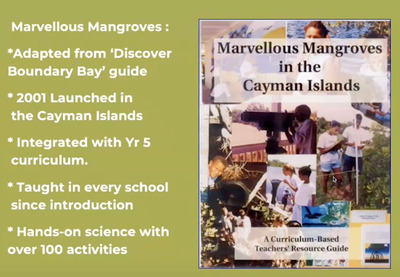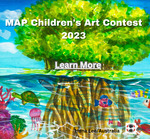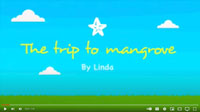MAP News Issue #572 – May 20, 2023
The MAP News | |
FEATURED STORYHigh-Quality, Nature-Based Solutions in Indonesia: Allying with Communities, Restoring Ecosystems  INDONESIA – When implemented thoughtfully, nature-based climate-action projects support biodiversity and connect communities, governments and other organizations to make long-lasting, impactful changes that no one group could do alone.ClimeCo, a sustainability solutions provider and project developer, is currently funding a locally led mangrove-reforestation project in Indonesia in close partnership with YAKOPI (Yayasan Konservasi Persisir Indonesia) — an Indonesia-based non-governmental organization responsible for planting and community engagement, and PUR Projet — an on-the-ground project developer providing critical oversight and guidance. The YAKOPI mangrove project encompasses 196 villages and approximately 1,100 hectares in the Aceh and North Sumatra regions, providing investment in local socio-economic development — including gender-equitable employment and ecotourism. Additionally, it promotes the implementation of sustainable, locally run pilot fisheries called silvofisheries — a form of sustainable aquaculture that integrates planting, maintenance and protection of mangrove forests in aquaculture ponds. ClimeCo relies heavily on its partners’ local knowledge to identify best practices and to implement proper planting techniques, such as recognizing and utilizing healthy and vigorous native saplings known as propagules. INDONESIA – When implemented thoughtfully, nature-based climate-action projects support biodiversity and connect communities, governments and other organizations to make long-lasting, impactful changes that no one group could do alone.ClimeCo, a sustainability solutions provider and project developer, is currently funding a locally led mangrove-reforestation project in Indonesia in close partnership with YAKOPI (Yayasan Konservasi Persisir Indonesia) — an Indonesia-based non-governmental organization responsible for planting and community engagement, and PUR Projet — an on-the-ground project developer providing critical oversight and guidance. The YAKOPI mangrove project encompasses 196 villages and approximately 1,100 hectares in the Aceh and North Sumatra regions, providing investment in local socio-economic development — including gender-equitable employment and ecotourism. Additionally, it promotes the implementation of sustainable, locally run pilot fisheries called silvofisheries — a form of sustainable aquaculture that integrates planting, maintenance and protection of mangrove forests in aquaculture ponds. ClimeCo relies heavily on its partners’ local knowledge to identify best practices and to implement proper planting techniques, such as recognizing and utilizing healthy and vigorous native saplings known as propagules.AFRICA Assessing the use of West African Mangrove oyster as a bioindicator of aquatic environment in Densu Estuary economic viability  GHANA – Invisible fisheries such as oysters though minimal and less harvested in comparison to fishes, are of nutritional, medicinal and economic value. Oysters are a source of nutrients in the form of protein to many people in West Africa including Ghana. The shells provide calcium and are used in the preparation of poultry and livestock feeds. In addition, the shells serve as an ingredient in paint preparations, a rough base for footpaths, and cement for building and raw material for pharmaceutical industries. Ecologically, sessile organisms like oysters are important in the aquatic food chain. Oysters are filter feeders and while they feed on plankton, they help improve on water quality. The settling behavior of oyster spats with time, form reefs which provide structured habitat in estuaries and lagoons for many fish species and crabs. In Ghana, the West African Mangrove Oyster (WAMO) is widely distributed occurring in mangroves, sediments and compact substrates of coastal water bodies. In the country, oyster populations in estuaries and lagoons are declining. As at 1996, about nine (9) out of the 41 wetland ecosystems lost their oyster populations according to research GHANA – Invisible fisheries such as oysters though minimal and less harvested in comparison to fishes, are of nutritional, medicinal and economic value. Oysters are a source of nutrients in the form of protein to many people in West Africa including Ghana. The shells provide calcium and are used in the preparation of poultry and livestock feeds. In addition, the shells serve as an ingredient in paint preparations, a rough base for footpaths, and cement for building and raw material for pharmaceutical industries. Ecologically, sessile organisms like oysters are important in the aquatic food chain. Oysters are filter feeders and while they feed on plankton, they help improve on water quality. The settling behavior of oyster spats with time, form reefs which provide structured habitat in estuaries and lagoons for many fish species and crabs. In Ghana, the West African Mangrove Oyster (WAMO) is widely distributed occurring in mangroves, sediments and compact substrates of coastal water bodies. In the country, oyster populations in estuaries and lagoons are declining. As at 1996, about nine (9) out of the 41 wetland ecosystems lost their oyster populations according to research Stop criminalizing pipeline protesters! 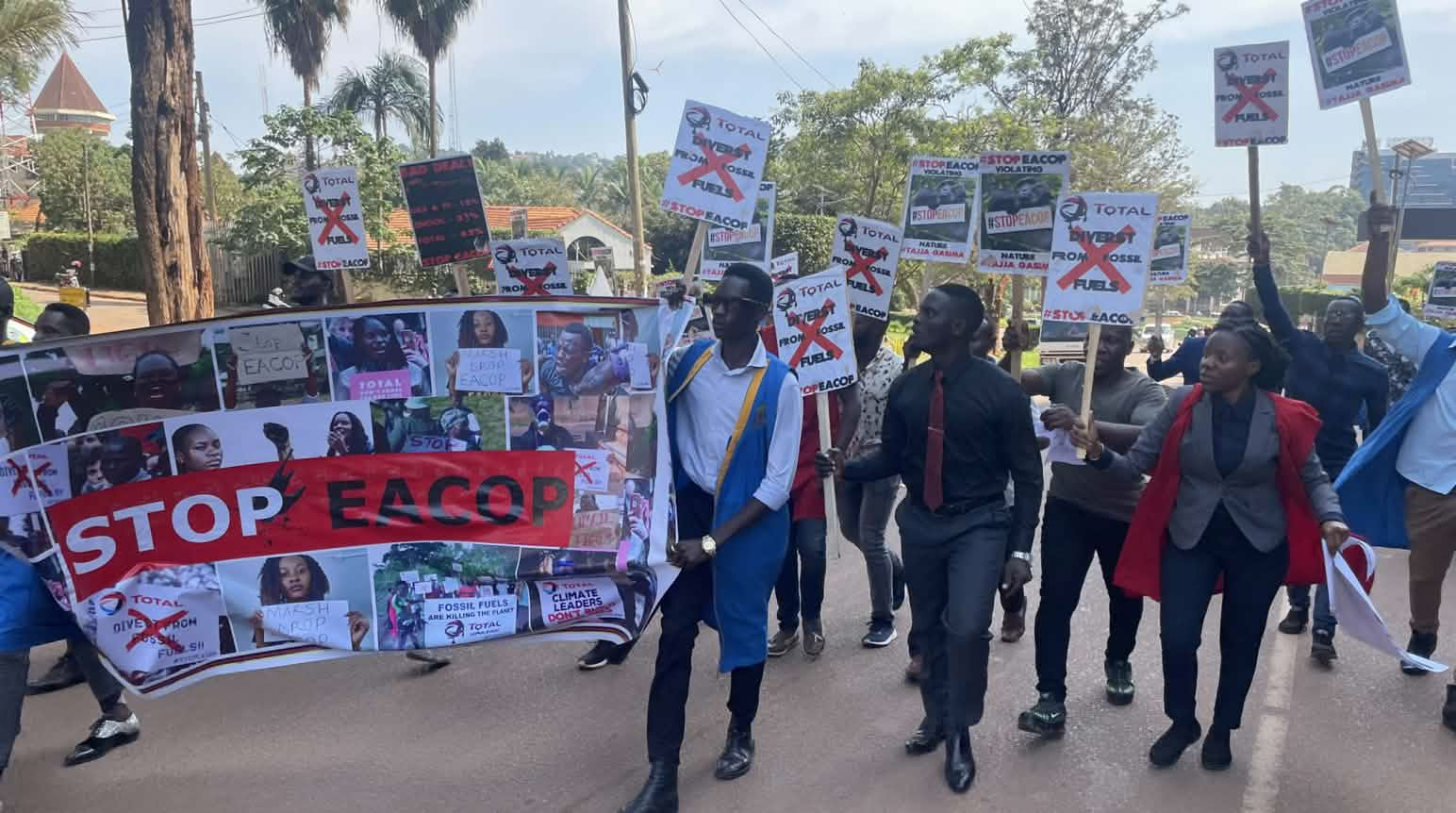 UGANDA – Authorities in Uganda are cracking down on critics of fossil fuel projects. Nine university students were arrested and are awaiting trial in Kampala for protesting against the EACOP pipeline. The threat of legal action is nerve-wracking and potentially costly for the accused. According to the activists, the prosecutor’s intention is to silence critics. The proposed $3.5-billion East African Crude Oil Pipeline (EACOP), would ship crude oil from Lake Albert in Uganda to global markets through a port on Tanzania’s Indian Ocean coast. Development groups have raised alarm about the impacts on the climate – saying the pipeline will generate 34 million tonnes of carbon emissions annually – and on communities, as an estimated 14,000 households are at risk of losing their land. But climate campaigners are increasingly being targeted and stifled under the Public Management Order Act and legislation governing NGOs, said Dickens Kamugisha, chief executive of the Kampala-based Africa Institute for Energy Governance (AFIEGO). Let the students know that they are not alone, and that the international community stands behind them. UGANDA – Authorities in Uganda are cracking down on critics of fossil fuel projects. Nine university students were arrested and are awaiting trial in Kampala for protesting against the EACOP pipeline. The threat of legal action is nerve-wracking and potentially costly for the accused. According to the activists, the prosecutor’s intention is to silence critics. The proposed $3.5-billion East African Crude Oil Pipeline (EACOP), would ship crude oil from Lake Albert in Uganda to global markets through a port on Tanzania’s Indian Ocean coast. Development groups have raised alarm about the impacts on the climate – saying the pipeline will generate 34 million tonnes of carbon emissions annually – and on communities, as an estimated 14,000 households are at risk of losing their land. But climate campaigners are increasingly being targeted and stifled under the Public Management Order Act and legislation governing NGOs, said Dickens Kamugisha, chief executive of the Kampala-based Africa Institute for Energy Governance (AFIEGO). Let the students know that they are not alone, and that the international community stands behind them.AMERICASManual for the ecological restoration of mangroves in the Mesoamerican Reef System and the Wider Caribbean Dirty shrimp farms are punching a huge hole in the environment. A.I. could cut it in half  USA – Inside a humid warehouse in suburban Indianapolis, a company called Atarraya is using large metal containers and the latest technology to grow shrimp hundreds of miles from the ocean. At one end of the hangar-like building sit blue metal boxes that look similar to shipping containers. But instead of holding cargo for transport, they’re designed to grow Pacific whiteleg shrimp anywhere in the world, overseen by employees who don’t require specialized training. “The software does all the heavy lifting,” Daniel Russek, CEO of Mexico City– and Indianapolis-based Atarraya, tells Fortune Magazine during a tour of the company’s newly launched U.S. operation, which includes a small office building and a warehouse that it plans to fill with 20 of the micro shrimp farms. The software Russek refers to is cloud-based artificial intelligence that monitors water quality, regulates temperature and oxygenation, and feeds the shrimp. For Russek, the concept is a bet that Atarraya will be able not only to sell locally grown seafood itself but also to franchise its Shrimpbox technology to seafood distributors or farmers, whether they have aquaculture experience or not. When paired with renewable energy, this technology-powered, distributed seafood model could help reduce greenhouse gas emissions, especially as global demand for seafood rises. The Food and Agriculture Organization of the United Nations estimates that global per capita consumption of wild-caught and farmed aquatic animals will increase to 47 pounds annually in 2030 from 45 pounds in 2020, a year when global aquaculture production hit a record of 122.6 million metric tons. USA – Inside a humid warehouse in suburban Indianapolis, a company called Atarraya is using large metal containers and the latest technology to grow shrimp hundreds of miles from the ocean. At one end of the hangar-like building sit blue metal boxes that look similar to shipping containers. But instead of holding cargo for transport, they’re designed to grow Pacific whiteleg shrimp anywhere in the world, overseen by employees who don’t require specialized training. “The software does all the heavy lifting,” Daniel Russek, CEO of Mexico City– and Indianapolis-based Atarraya, tells Fortune Magazine during a tour of the company’s newly launched U.S. operation, which includes a small office building and a warehouse that it plans to fill with 20 of the micro shrimp farms. The software Russek refers to is cloud-based artificial intelligence that monitors water quality, regulates temperature and oxygenation, and feeds the shrimp. For Russek, the concept is a bet that Atarraya will be able not only to sell locally grown seafood itself but also to franchise its Shrimpbox technology to seafood distributors or farmers, whether they have aquaculture experience or not. When paired with renewable energy, this technology-powered, distributed seafood model could help reduce greenhouse gas emissions, especially as global demand for seafood rises. The Food and Agriculture Organization of the United Nations estimates that global per capita consumption of wild-caught and farmed aquatic animals will increase to 47 pounds annually in 2030 from 45 pounds in 2020, a year when global aquaculture production hit a record of 122.6 million metric tons. ASIA Mangrove museum nearly funded – needs final help 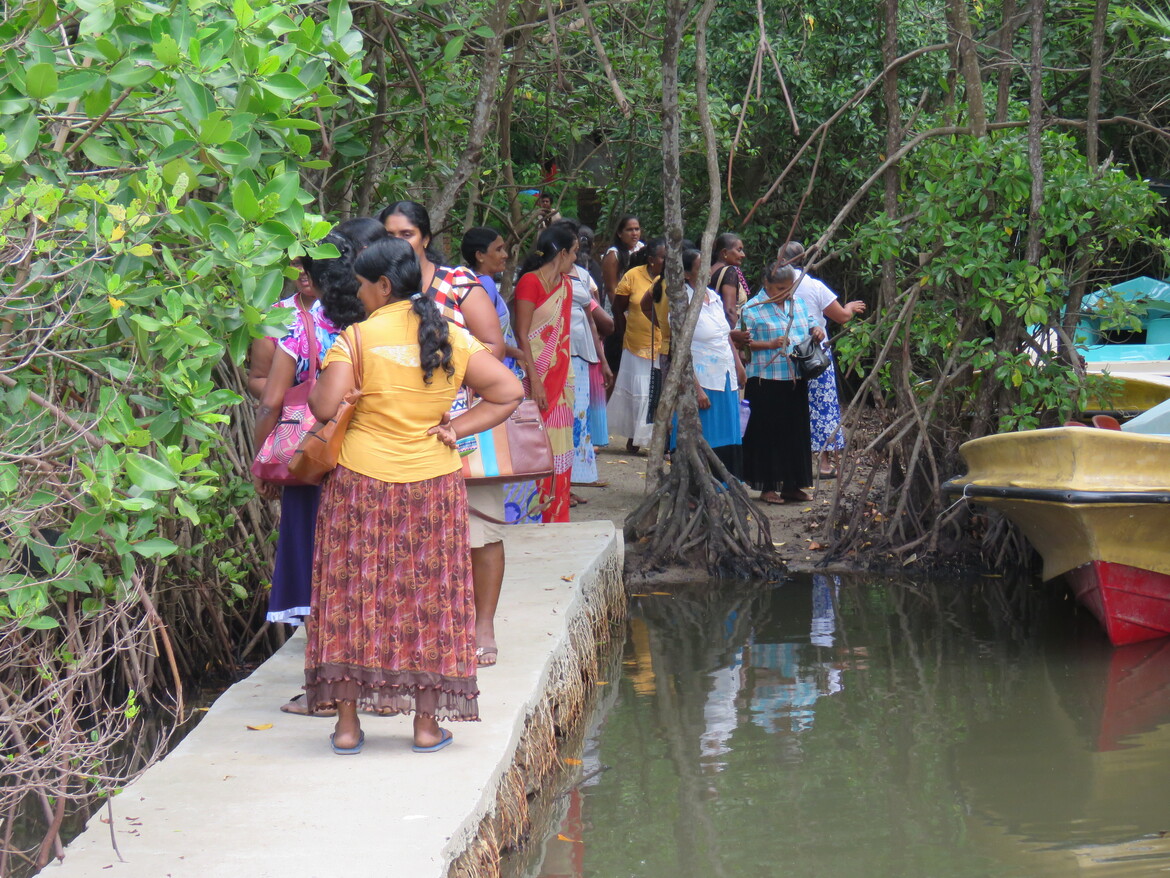 SRI LANKA – Thanks to several major donors, our crowdfunding campaign to save Sri Lanka’s first-of-its-kind mangrove museum has almost reached its goal. Now it’s up to supporters like you to get us over the finish line and ensure a bright future for this important, but struggling institution. Douglas Thesera has worked tirelessly to protect mangroves in Sri Lanka for decades, and today he serves as the director of the museum. He has a message of gratitude for our generous donors, who are helping him and his team continue their urgently needed work. For five years, Seacology worked with conservation leaders and coastal communities across Sri Lanka to protect and restore the island nation’s mangroves. Opened in 2016 in a celebration attended by then-president Maithripala Sirisena and other dignitaries, the Lanka Mangrove Museum serves as a repository of knowledge about the country’s threatened coastal wetlands, and is a top destination in the world for anyone who wants to learn about them. Nestled alongside a lagoon and surrounded by mangroves, the large facility is home to engaging displays about the 23 species of mangrove trees found in Sri Lanka and the incredible array of wildlife they support. Leading scientists visit the facility, and in past years it was one of the most popular destinations for school groups from across the country. It was even recognized by the national postal service with a commemorative stamp. SRI LANKA – Thanks to several major donors, our crowdfunding campaign to save Sri Lanka’s first-of-its-kind mangrove museum has almost reached its goal. Now it’s up to supporters like you to get us over the finish line and ensure a bright future for this important, but struggling institution. Douglas Thesera has worked tirelessly to protect mangroves in Sri Lanka for decades, and today he serves as the director of the museum. He has a message of gratitude for our generous donors, who are helping him and his team continue their urgently needed work. For five years, Seacology worked with conservation leaders and coastal communities across Sri Lanka to protect and restore the island nation’s mangroves. Opened in 2016 in a celebration attended by then-president Maithripala Sirisena and other dignitaries, the Lanka Mangrove Museum serves as a repository of knowledge about the country’s threatened coastal wetlands, and is a top destination in the world for anyone who wants to learn about them. Nestled alongside a lagoon and surrounded by mangroves, the large facility is home to engaging displays about the 23 species of mangrove trees found in Sri Lanka and the incredible array of wildlife they support. Leading scientists visit the facility, and in past years it was one of the most popular destinations for school groups from across the country. It was even recognized by the national postal service with a commemorative stamp.Mekong Delta shrimp farmers’ enthusiasm for working with mangroves is waning 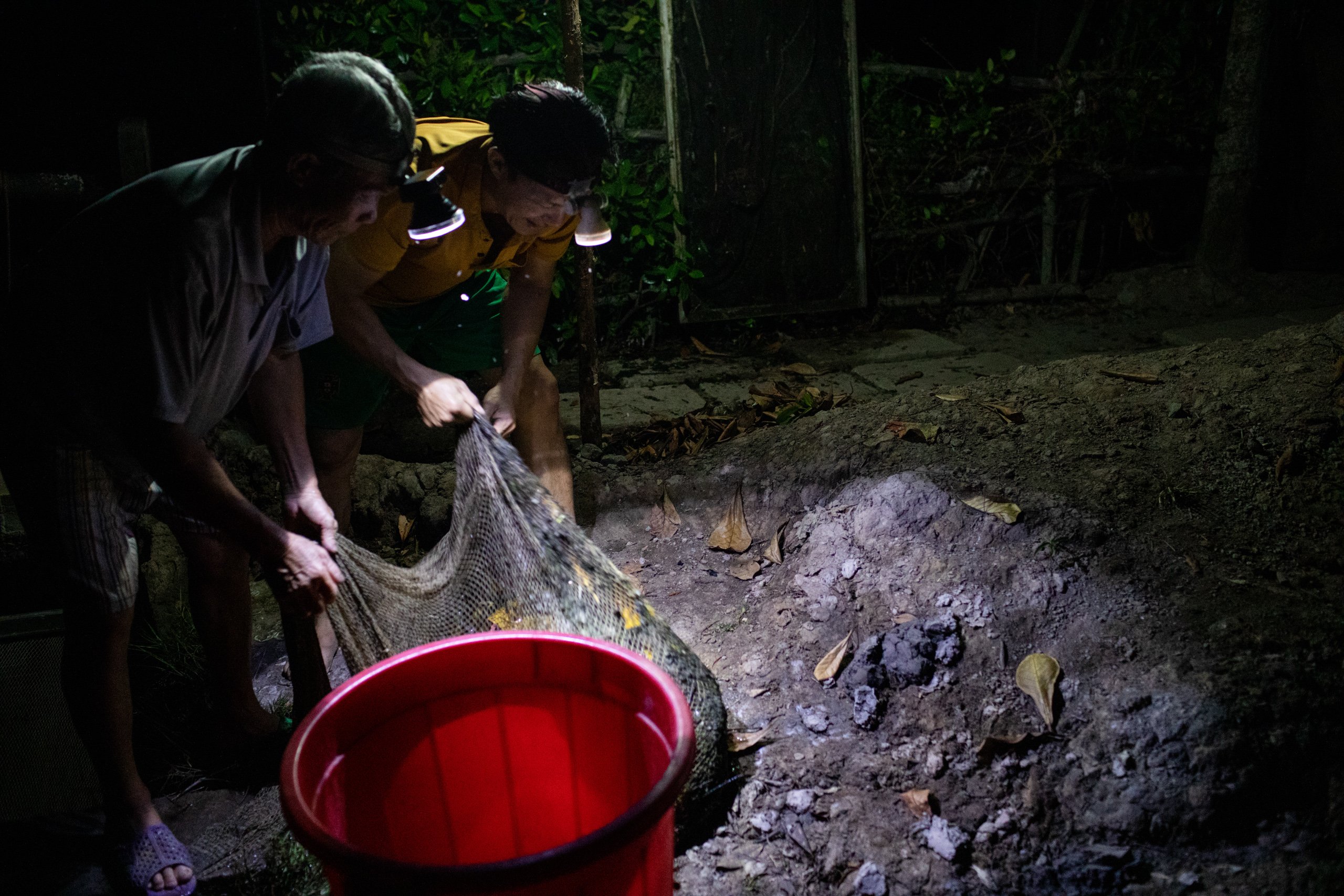 IETNAM – Leaving space for mangroves among the shrimp farms of Vietnam’s Mekong Delta has been a win-win for aquaculture and the environment, but farmers say the economic benefits of the model are slowing. Thac is signed up to an organic programme with a major seafood producer, under which farmers are not allowed to add fertiliser, antibiotics, growth promoters or other chemicals to the water. “Our shrimp, crabs, fish and our mangroves rely 100% on the environment,” he says. On paper, it’s a win-win: mangroves are saved, and farmers’ incomes are boosted. The rate of mangrove loss due to aquaculture in the Mekong Delta has fallen, from 2,440 hectares a year between 1973 and 1990 to 1,490 hectares a year between 2010 and 2020. But a closer look at this mangrove stronghold in the world’s third–largest delta reveals a more complex picture. Despite the benefits of the integrated shrimp-mangrove model, tension remains between the needs of the forest and the aquaculture industry – and this is being aggravated by both climate change and the effects of upstream dams. Most of the land of the Mekong Delta owes its existence to mangroves. “It’s a magical tree that can digest salty water and dirty air and thrive,” says Vo Quoc Tuan, a mangrove specialist at Can Tho University. “Mangroves have been and are still being underappreciated, not just by farmers but also the general public and… the government.” IETNAM – Leaving space for mangroves among the shrimp farms of Vietnam’s Mekong Delta has been a win-win for aquaculture and the environment, but farmers say the economic benefits of the model are slowing. Thac is signed up to an organic programme with a major seafood producer, under which farmers are not allowed to add fertiliser, antibiotics, growth promoters or other chemicals to the water. “Our shrimp, crabs, fish and our mangroves rely 100% on the environment,” he says. On paper, it’s a win-win: mangroves are saved, and farmers’ incomes are boosted. The rate of mangrove loss due to aquaculture in the Mekong Delta has fallen, from 2,440 hectares a year between 1973 and 1990 to 1,490 hectares a year between 2010 and 2020. But a closer look at this mangrove stronghold in the world’s third–largest delta reveals a more complex picture. Despite the benefits of the integrated shrimp-mangrove model, tension remains between the needs of the forest and the aquaculture industry – and this is being aggravated by both climate change and the effects of upstream dams. Most of the land of the Mekong Delta owes its existence to mangroves. “It’s a magical tree that can digest salty water and dirty air and thrive,” says Vo Quoc Tuan, a mangrove specialist at Can Tho University. “Mangroves have been and are still being underappreciated, not just by farmers but also the general public and… the government.”*Articles in this newsletter may mention practices being used and/or show exagerated results being claimed without proof. Stories are presented here in effort to show mangrove related activity around the world and do not necessarily reflect Mangrove Action Project’s views or mangrove restoration best-practices. NOTICE
ACTION ALERTS | |
Mangrove Action Project Click here to view past newsletters
| |

 MESOAMERICA – Mangroves in the Mesoamerican Reef Region (MAR) and the Wider Caribbean are the economic foundation of over 134 million people living in the coastal regions. Mangroves provide protection against floods and buffer against storms and hurricanes, to which the region is highly vulnerable. Additionally, due to their close relationship with other ecosystems, such as coral reefs and seagrasses, mangroves and the ecosystem services they provide are the conservation pillars of coastal ecosystems. Among these services, the storage potential of blue carbon is one of the most essential services in mitigating the effects of climate change, in addition to supporting important tourism and fisheries industries. However, every year the extent of mangroves continues to decline due to the impacts of climate change, change in land use, and the overexploitation of resources. This manual contributes to strengthening local, national, and regional capacities for the ecological restoration of mangroves and the ecosystem services they provide in the MAR and the Wider Caribbean region. Within the framework of the Cartagena Convention and the United Nations Decade on Ecosystem Restoration 2021-2030, ecological restoration (ER) of mangroves is considered a Nature-based Solution (NbS) that allows addressing the effects of climate change. The objective of the manual is to guide and strengthen local and regional capacities of all those (individuals, groups, organizations) interested in recovering mangrove ecosystems in the Mesoamerican Reef Region (MAR) and the Wider Caribbean.
MESOAMERICA – Mangroves in the Mesoamerican Reef Region (MAR) and the Wider Caribbean are the economic foundation of over 134 million people living in the coastal regions. Mangroves provide protection against floods and buffer against storms and hurricanes, to which the region is highly vulnerable. Additionally, due to their close relationship with other ecosystems, such as coral reefs and seagrasses, mangroves and the ecosystem services they provide are the conservation pillars of coastal ecosystems. Among these services, the storage potential of blue carbon is one of the most essential services in mitigating the effects of climate change, in addition to supporting important tourism and fisheries industries. However, every year the extent of mangroves continues to decline due to the impacts of climate change, change in land use, and the overexploitation of resources. This manual contributes to strengthening local, national, and regional capacities for the ecological restoration of mangroves and the ecosystem services they provide in the MAR and the Wider Caribbean region. Within the framework of the Cartagena Convention and the United Nations Decade on Ecosystem Restoration 2021-2030, ecological restoration (ER) of mangroves is considered a Nature-based Solution (NbS) that allows addressing the effects of climate change. The objective of the manual is to guide and strengthen local and regional capacities of all those (individuals, groups, organizations) interested in recovering mangrove ecosystems in the Mesoamerican Reef Region (MAR) and the Wider Caribbean.